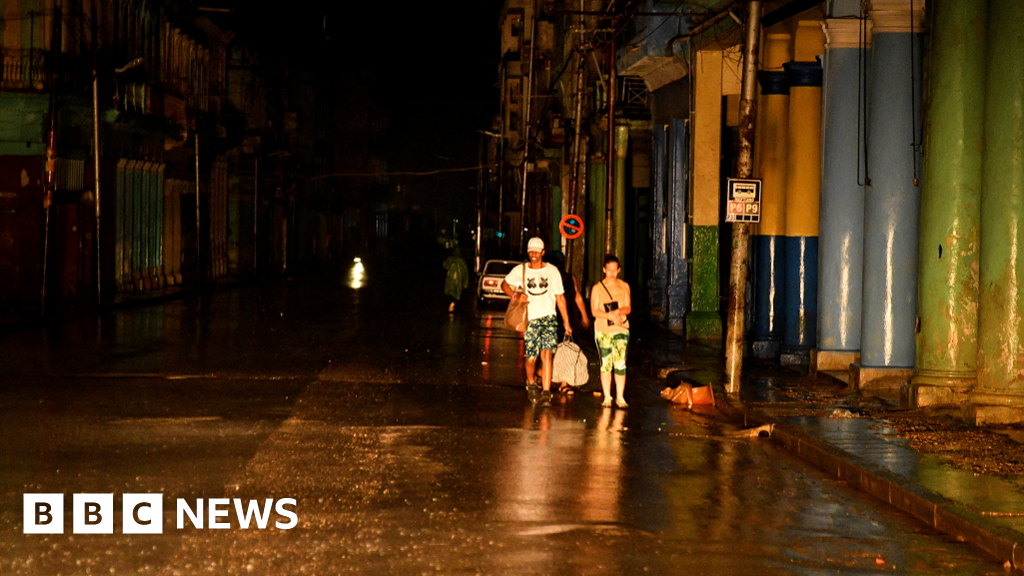Cuba Rests Power Restoration Efforts Following Nationwide Blackout
Cuba is in the midst of a challenging recovery as officials work to restore power after a devastating nationwide blackout triggered by Hurricane Rafael. The storm, which made landfall on Wednesday, brought relentless winds of up to 185 km/h (115 mph) and prompted widespread evacuations, with nearly 70,000 people forced to leave their homes. While officials report no fatalities at this time, the aftermath has left thousands without power and significant damage across the country.
A Nation in Recovery
President Miguel Díaz-Canel announced the start of power restoration efforts, emphasizing that “every step from this point forward is geared towards recovery. Together we will do it.” The provinces worst affected include Artemisa, Mayabeque, and the capital city of Havana. These areas were particularly susceptible, facing warnings of storm surges, flash floods, and potential mudslides.
Residents across Cuba, home to approximately 10 million people, grappled with the effects of the storm as authorities raced to restore essential services. In Havana, many took to their front yards, equipped with shovels, brooms, and buckets, to clear away debris left by the hurricanes, such as fallen branches and mud.
The Impact of Hurricane Rafael
Hurricane Rafael’s impact was felt throughout the western regions of Cuba, especially along key transportation routes. Eyewitness reports detail fallen electricity pylons littering the motorway connecting Havana to Artemisa. Streets and properties were inundated with water, requiring emergency responders to deploy rapid assistance, though rescue operations faced challenges due to continuous rain.
Elias Perez, a local resident from Artemisa, shared how the power cuts have forced families to "improvise." He mentioned, "If you don’t have gas, you have to improvise with coal. Yesterday, my wife and I got by with coal. It’s a mess, but we have to keep going." Such resourcefulness is reflective of how Cubans have historically adapted to hardship as they navigate through challenges.
Historical Context
Last month, Cuba faced a similar crisis when millions were left without power for four days during another blackout, exacerbated by issues related to the country’s aging energy infrastructure. The impact of Hurricane Oscar—a less severe but damaging storm—during the same period brought further attention to the frailty of the electric grid. Natasha Martinez, another Artemisa resident, asserted, "We know how to survive. We’re in the dark all the time, you know."
The recurrence of these natural disasters exposes the vulnerability of Cuba’s infrastructure, raising concerns about its resilience in the face of climate change and extreme weather events. As the country starts the recovery process, many are questioning whether sufficient measures are in place to prevent similar incidents in the future.
Community Resilience
Despite widespread destruction, the people of Cuba are drawing on their deep-seated resilience to face the aftermath. With spirit and determination, Cubans are coming together to help one another. Volunteer organizations and local community groups mobilized swiftly, organizing relief efforts for those displaced and affected by the storm.
As communities work to rebuild and restore their lives, the government is expected to introduce initiatives aimed at strengthening infrastructure and improving disaster preparedness. Experts have urged for a long-term strategy that aligns with climate adaptation goals, calling for investments in renewable energy sources and modernizing the electric grid.
The Road Ahead
Looking ahead, the restoration of power could take time, as officials continue to assess the full extent of damage caused by Hurricane Rafael. Given the previous blackout, there is a growing urgency to reinforce Cuba’s electric infrastructure and invest in contingencies to handle natural disasters more effectively.
Join the Conversation
As Cuba embarks on its recovery journey, we invite readers to engage with us. What are your thoughts on the measures needed to improve Cuba’s infrastructure? How can communities better prepare for future storms? Share your comments and insights below, and let’s foster a dialogue on resilience and recovery.
For additional updates on Hurricane Rafael and its impact, visit our Hurricane Preparedness section where we discuss emergency responses and community initiatives.
For authoritative insights on climate change and infrastructure challenges, visit National Oceanic and Atmospheric Administration (NOAA) or World Meteorological Organization (WMO).
Stay tuned for more updates as we closely monitor the situation in Cuba. Together, we can support the recovery efforts and promote preparedness for future challenges.

